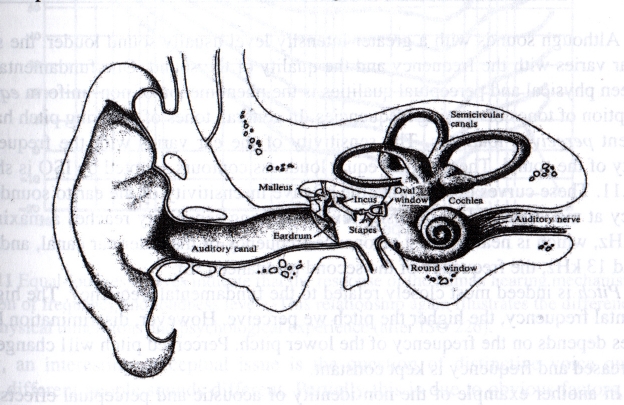PHYSIOLOGY OF THE EAR

Key points:
- Three main sections: outer, middle, and inner. The outer and middle
ears reproduce the analog signal (impedance matching); the
inner ear transduces the pressure wave into an electrical signal.
- The outer ear consists of the external visible part and the
auditory canal. The tube is about 2.5 cm long.
- The middle ear consists of the eardrum and three bones (malleus,
incus, and stapes). It converts the sound pressure wave to
displacement of the oval window (entrance to the inner ear).
- The inner ear primarily consists of a fluid-filled tube (cochlea)
which contains the basilar membrane. Fluid movement along the basilar
membrane displaces hair cells, which generate electrical signals.
- There are a discrete number of hair cells (30,000). Each hair cell
is tuned to a different frequency.
- Place vs. Temporal Theory: firings of hair cells are processed
by two types of neurons (onset chopper units for temporal features
and transient chopper units for spectral features).
- Most mammals have similar hearing systems (cats and chinchillas
are popular animals for experimentation).

